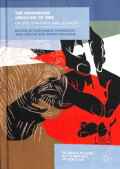Without any doubt, the massacres that took place in Indonesia in 1965 were the worst in Indonesian history. The exact number of victims is unknown, but estimations range from 500.000 to 1.500.000 and even far more. Much has been written about the event and its background, but still, the matter is not yet clear at all. Indonesian historians, not to mention activists and politicians, are hampered in their efforts because all serious endeavours to clarify the crucial role of the army, right-wing politicians and foreign powers are quickly branded communist propaganda, which is forbidden under Indonesian law. Furthermore, there is no wider effort in Indonesia to come to terms with this dark chapter of the past. Moreover, many culprits of those days still feel they were right to act as they did.
Therefore, every scholarly approach in this direction is highly welcome. The majority of books and articles are written by westerners. Much less is written by Indonesians themselves, for the cited reasons. Nevertheless, at the grassroots level and even further, many Indonesians have started to conduct academic case studies (mainly by scholars) or to document what had happened by the methods of oral history (mainly by activists). In all cases, it is clear that time is ticking away because the number of eye-witnesses is constantly shrinking. Research is further hampered by the unwillingness of state authorities, especially the military, to provide the necessary insight into documents.
The reviewed book is a very useful step in the right direction. It is the result of a conference held at Deakin University in Geelong, Australia. The publishers are familiar with the topic. On the other hand, the articles in the book are written by both western and Indonesian scholars. This is significant because it is extremely important that such a research endeavour is conducted in a collaborative way in which Indonesians participate in key positions.
The editors – Katherine McGregor, Jess Melvin and Annie Pohlman – have already conducted research and published on the topic. Their introduction – the first chapter – not only introduces the articles of the book, but also provides an overview about the research history on this topic. The second chapter by Jess Melvin and Annie Pohlman discusses the question of whether the 1965 massacres fit into the category of genocide. This question is significant because of its judicial fallout with regard to international law. Unfortunately, the question is not answered convincingly. The rest of the book consists of 15 chapters and is divided into two parts. The first part is comprised of new empirical research and interpretations of the events in 1965. The chapters of the second part thematise the legacy of the massacres, i.e. their reception from their occurrence until today.
As is often usual with conference proceedings, we find a wide array of topics that are only loosely connected. The chapters that are concerned with the immediate and long-term impact on Indonesian society are especially interesting. I just want to highlight four of them.
In chapter 7 (“A rite of de-modernization: The anti-communist purge in Surabaya”), Robbie Peters shows that the massacre not only aimed at smashing the Communist Party, but also to teach the people to give up revolutionary and modern thinking by forcing them to submit to an “almighty” new order.
Chapters 12 and 13 thematise aspects of the performing arts as modes of approach. In chapter 12 (“Heads from the North: Transcultural memorialization of the 1965 Indonesian killings at the National Gallery of Australia”), Katherine McGregor turns our attention to the fact that up until now, nowhere in Indonesia is there any kind of memorial or even a grave for the murdered persons. The only memorial was set up by the son of one of the victims who migrated to Australia: 66 heads, modelled after the faces of his parents and placed in a pond at the National Gallery of Australia, symbolizing the drowning people in 1965/1966. In chapter 13 (“The history of loss and the loss of history: Papermoon Puppet Theatre examines the legacies of the 1965 violence in Indonesia”), Marianna Lis introduces us to the Papermoon Puppet Theatre, a theatre group in Yogyakarta. In several performances, this group shows how the surviving victims deal with and have to come to terms with their experiences.
Also of special interest is chapter 15 (“Zombie anti-communism? Democratization and the demons of Suharto-era politics in contemporary Indonesia”), written by Stephen Miller. It deals with the instrumentalization of anti-communist rhetoric by right-wing political groups in their fight against democratization. Therefore, anti-communism is also used as a tool in political smear campaigns from the demise of Suharto until today.
All in all, we can say that the book is a valuable tool to approach some significant aspects of what happened in 1965/1966 and especially its aftermath. The book shows that an approach to what happened could and should be multi-layered. The chapters provide a stimulus for further research. It is not a book that provides a comprehensive account of the events and their impact.1
Note:
1 For a comprehensive overview, see, for example, Geoffrey B. Robinson, The Killing Season. A History of the Indonesian Massacres, 1965–66, Princeton 2018.


